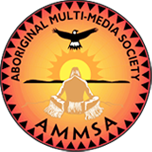Article Origin
Volume
Issue
Year
Page 14
Blood Elder Charles Crow Chief said it takes something "special" for non-Natives to receive Indian names.
In principal Ray Viel's point of view, "special" is the course St. Michael's separate school in Pincher Creek has been on for a number of years, and he and vice-principal Don Kuchison just happened to be at the helm when the Blood nation decided to honor the school's philosophy.
In April, Viel and Kuchison were given the Blackfoot names of Niina (chief or leader) and Iinastiina (little chief or little leader), respectively.
Crow Chief performed the naming ceremony after being asked by Melvin Potts, who resides on the Piikani Nation. St. Mike's school has a large number of the Piikani Nation's children among its students.
"It's part of our tradition to bless a person by a name," said Crow Chief.
"I was quite humbled by (the ceremony)," said Viel. "It's a sign of the working relationship the school has developed with its students, parents and the community. It's all the little things we do."
The little things have added up to a lot and have helped break down the tension between Native and non-Native students as all are included in the programming.
"We're in a society where we all need to be contributors," said Viel.
Two years ago, when Viel took over at the helm of St. Mike's, a mentorship program was introduced. Financed initially by Justice Canada, the program saw a Native person, Skipper Potts, work with both Native and non-Native children to break down the barriers that prevented learning. The mentorship program allowed parents and Elders to have input into the success of the students.
Student participation in Native ceremonies and celebrations, teaching Blackfoot in the school, and employing a Native liaison worker are other initiatives St. Mike's has begun.
It goes beyond promoting understanding of culture, said Viel. It's about acceptance and inclusion.
"When it comes to traditional wisdom, there's a lot of things we can use there to help our kids learn. We need to allow ourselves to be enriched by each other's cultures," said Viel.
- 1851 views
